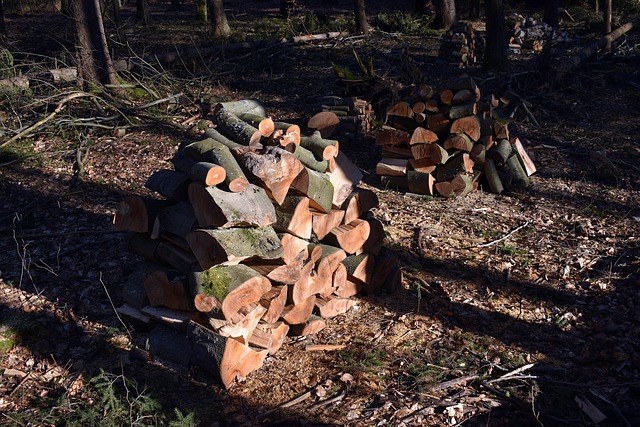Lane County, Oregon's logging history dates back to the 19th century, driving economic growth and shaping cultural identity. While traditional clearcutting has impacted the environment, the county has transitioned to more sustainable logging methods due to environmental awareness and regulatory changes. These practices include selective cutting, reforestation, and habitat preservation, balancing economic needs with ecological stewardship. Lane County's logging industry evolution showcases a successful blend of historical practices and modern sustainability, making it a model for responsible forest management.
“Lane County, Oregon, has long been synonymous with timber, where a rich logging history has shaped its development. This article delves into the multifaceted role of the county’s timber industry, exploring its historical overview, from traditional logging practices to modern sustainability efforts. We analyze the economic boom it brought to local communities and delve into environmental concerns, regulatory changes, and the industry’s adaptation to eco-friendly methods. Understanding Lane County’s logging history provides valuable insights into the delicate balance between economic growth and ecological preservation.”
- Historical Overview of Lane County Logging Practices
- Economic Impact of Timber Industry on Local Communities
- Environmental Consequences: Clearcutting and Beyond
- Regulatory Changes and Their Effect on Lane County's Lumber Sector
- The Evolution of Sustainable Logging in Lane County, Oregon
Historical Overview of Lane County Logging Practices

Lane County, Oregon, boasts a rich history intertwined with its timber industry. For centuries, the lush forests of this region have been a vital resource, driving economic growth and shaping the local culture. The logging practices in Lane County have evolved significantly over time, reflecting both technological advancements and changing environmental consciousness.
Historically, logging in the area was predominantly done through traditional methods, with ax and saw-wielding loggers clearing vast tracts of timberland. The late 19th century saw the introduction of steam-powered locomotives and floating log drives, revolutionizing the industry. These innovations allowed for more efficient extraction of timber from remote areas, fueling a boom in construction and pulp production. However, as the 20th century progressed, environmental concerns began to surface, leading to more sustainable logging practices and conservation efforts aimed at preserving the region’s natural beauty.
Economic Impact of Timber Industry on Local Communities

The timber industry has played a pivotal role in shaping the economy and culture of Lane County, Oregon. With a rich logging history dating back to the late 19th century, the county has witnessed significant growth and prosperity driven by its abundant natural resources. The industry’s impact extends far beyond just employment figures; it has left an indelible mark on local communities, fostering a strong sense of identity and providing a foundation for various ancillary businesses.
The economic boost from Lane County logging history is evident in the thriving towns and cities scattered across the region. From small logging camps to bustling mills, the industry attracted workers from diverse backgrounds, creating a vibrant and diverse population. This influx of people led to the development of essential services, such as schools, hospitals, and retail outlets, which continue to thrive today, echoing the enduring legacy of the timber sector.
Environmental Consequences: Clearcutting and Beyond

The Lane County, Oregon timber industry has a long history deeply intertwined with the region’s development. Traditionally reliant on extensive clearcutting practices, this approach has significantly altered the local landscape. Over time, environmental consequences have become increasingly apparent, prompting a reevaluation of sustainable logging methods.
Beyond clearcutting, the industry’s impact extends to habitat destruction, soil erosion, and water quality degradation. These issues highlight the need for more responsible harvesting techniques that preserve ecological balance. As awareness grows, Lane County is gradually adopting practices focused on selective cutting, reforestation, and protecting vulnerable ecosystems, signaling a shift towards a greener logging history.
Regulatory Changes and Their Effect on Lane County's Lumber Sector

Over time, regulatory changes have significantly shaped Lane County’s lumber sector, reflecting broader environmental and safety concerns across the country. Historically dominated by extensive clear-cut logging practices, the county has seen a transition towards more sustainable methods due to evolving regulations. These shifts, driven by initiatives to protect biodiversity and combat climate change, have led to innovations in sustainable forest management.
Today, Lane County’s lumber industry navigates stringent environmental impact assessments, habitat conservation plans, and reduced harvesting limits, all of which play a crucial role in preserving the region’s unique ecosystem. While these regulations present challenges, they also drive adaptability and foster a more responsible approach to logging. This evolution underscores the complex interplay between economic development, environmental stewardship, and the dynamic nature of regulatory landscapes in the timber industry.
The Evolution of Sustainable Logging in Lane County, Oregon

Lane County’s timber industry has a rich history deeply intertwined with its development. Over time, practices have evolved from traditional logging methods to incorporate sustainable strategies. This transformation is a testament to the county’s efforts in balancing economic growth with environmental conservation.
The evolution of sustainable logging in Lane County began with early initiatives aimed at responsible forest management. As awareness grew about the impact of deforestation, local communities and forestry experts collaborated to develop practices that would preserve the region’s natural resources for future generations. This included implementing controlled harvesting techniques, reforestation efforts, and protecting sensitive ecosystems, all while ensuring a steady supply of timber for local industries.
